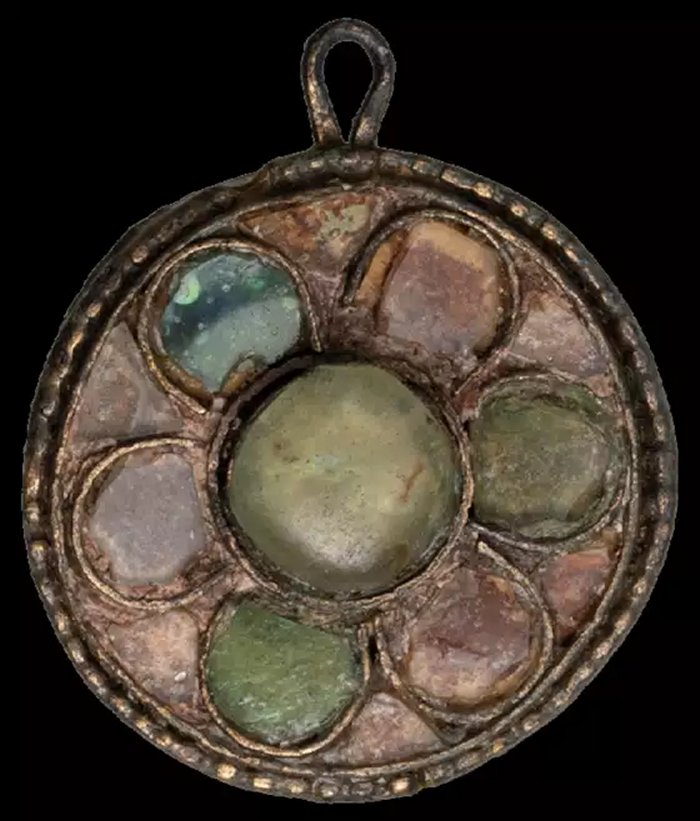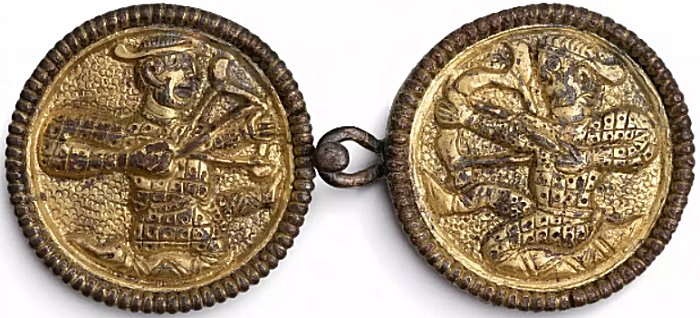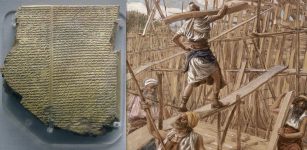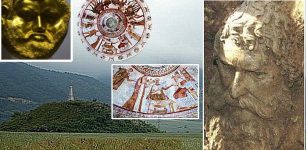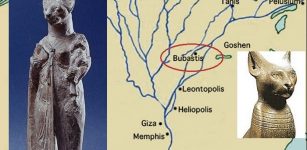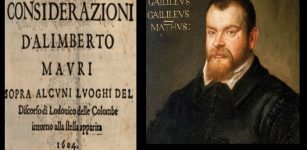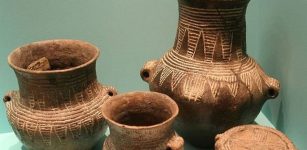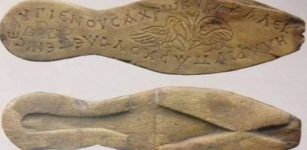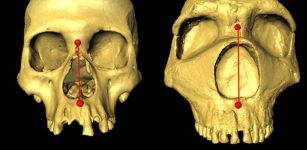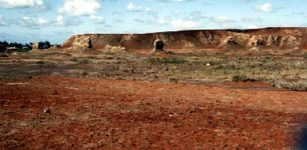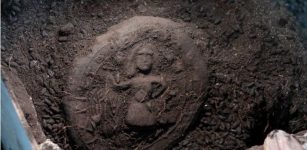Unexpected Archeogenetic Study Results Obtained In Graves Of Mödling And Leobersdorf, Lower Austria
Conny Waters - AncientPages.com - Researchers from the Max Planck Institute and an international team studied over 700 human remains from the Early Middle Ages. They analyzed two burial sites, Mödling and Leobersdorf.
Coat clasp with glass inlay - an Avar-period artefact that is typically associated with higher social status of women as well as higher biological connectivity as revealed by ancient DNA. Image credit: Benedict Seidl, [email protected]
Surprisingly, Leobersdorf individuals were mostly East Asian, while those in Mödling had European ancestry. Both communities coexisted for at least six generations. It was 1300 years ago.
Researchers who analyzed the remains, discovered family conditions, which were previously completely unknown.
The unexpected findings revealed that the individuals from Leobersdorf predominantly possessed East Asian ancestry, whereas those interred in Mödling primarily exhibited European lineage. Remarkably, these two communities coexisted in close proximity for a minimum of six generations.
Recent research integrating expertise from multiple disciplines has revealed that genes and culture do not necessarily need to align. The latest insights from the European Research Council's HistoGenes project stem from a genetic analysis of burial sites dating back to the Avar period in the 8th century CE. This study highlights that the Avars, who migrated in the 6th century from the East Asian Steppes, established themselves in East Central Europe amidst a diverse population.
Despite their abundant archaeological heritage, numerous questions persist.
Were the individuals interred at these sites descendants of the Avar conquerors, or did they belong to the preceding population that had been assimilated into Avar society? Alternatively, as many have speculated, had these two groups long since intermingled?
Upon examining the ancient DNA from human remains at these neighboring sites, researchers made a surprising discovery. The population of Leobersdorf predominantly had East Asian origin, whereas those interred in Mödling showed ancestry linked to European populations. This finding highlights the diverse genetic backgrounds present in these historical communities.
Ke Wang, a geneticist and one of the principal authors of the study, states that "the genetic distinction between these groups was both evident and consistent for the majority of individuals at the sites."
Prior to conducting genetic analysis, no significant differences between the sites had been identified. The archaeological remains and lifestyle of the two communities appeared remarkably similar.
Image source
Walter Pohl, a historian and senior author of the study from the Austrian Academy of Sciences, states that cultural integration was evidently successful despite significant genetic differences, leading to these individuals being recognized as Avars.
The historical records agree with the evidence from anthropology and archaeology that this was one of the most peaceful times in the history of the Vienna Basin, in spite of the reputation of the Avars as warriors. "We find no battle injuries on the skeletons and there are hardly any signs of deficiencies," explains Doris Pany-Kucera, anthropologist at the Natural History Museum Vienna and one of the lead authors of the study. Also, weapons were only occasionally placed in the graves.
Due to the implementation of an effective sampling strategy combined with highly sensitive genetic analysis, researchers were able to identify a significant number of relatives among the deceased. This approach highlights the capabilities of modern genetic techniques in uncovering familial connections.
"The extensive genetic connections among individuals enabled us to accurately reconstruct contemporary six-generation pedigrees at each location," asserts Zuzana Hofmanová, a geneticist and senior lead author of the study from the Max Planck Institute for Evolutionary Anthropology in Leipzig, Germany, and Masaryk University in Brno, Czechia.
In rare instances, individuals interred at the burial site exhibited no biological connections to others present. Notably, the researchers identified an absence of consanguineous relationships even among distant relatives. It is particularly intriguing that almost none of the mothers had local ancestry, suggesting their origins lay in different regions and communities.
Furthermore, there were minimal genetic links between Mödling and Leobersdorf.
Both communities adhered to a strategic social practice of selecting partners from specific other groups, effectively preserving their distinct ancestries. In Leobersdorf, the women who became mothers were evidently from communities with East Asian roots, possibly linked to the heart of the Avar realm. Meanwhile, in Mödling, these women were of European descent. This deliberate choice not only maintained their unique heritage but also enriched their cultural diversity.
Embracing such practices ensures that both communities honor and sustain their ancestral legacies while fostering a rich tapestry of cultural connections.
Yet they did not differ in status or wealth.
According to Bendeguz Tobias, an archaeologist and one of the principal authors of the study, status symbols such as belt fittings featuring griffins, along with their culture and customs, were identical. It is highly probable that both groups identified themselves as Avars.
“Mödling burial ground is one of the largest ever analyzed genetically, and such results hold a lot of potential for future research in various disciplines,” says Johannes Krause, director at the Max Planck Institute for Evolutionary Anthropology and one of the senior authors of the study.
Nevertheless, it's important to consider that comprehensive studies systematically examining burial grounds remain relatively uncommon. This scarcity invites reflection on the potential insights and knowledge that could be gained from more frequent and detailed investigations.
Paper: Ke Wang et al., Ancient DNA reveals reproductive barrier despite shared Avar-period culture. DOI: 10.1038/s41586-024-08418-5
Written by Conny Waters - AncientPages.com Staff Writer

